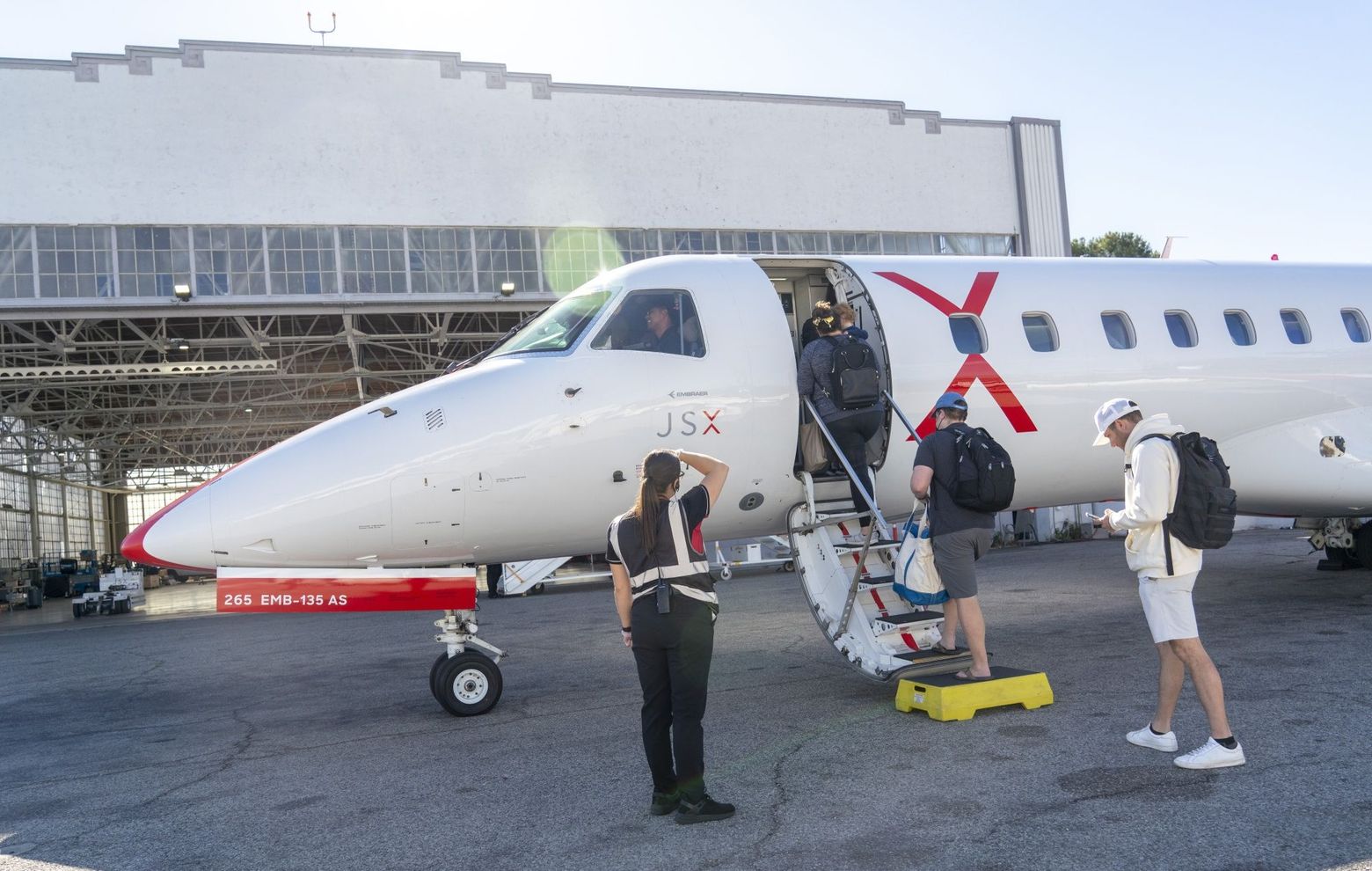Elon Musk enters in-flight wi-fi market with small satellites
Elon Musk says Starlink can serve aircraft of all sizes and cites an agreement with the parent of Hawaiian Airlines to serve large Airbus and Boeing planes

Sunday, September 18, 2022 | Chimniii Desk
SpaceX wants to show the world its Starlink satellite system can deliver Netflix and YouTube at 30,000 feet. So it recently held a demo for the media aboard a jet operated by its first airline customer, regional carrier JSX.
The short jaunt from Burbank to San Jose, California marks the start of Elon Musk’s bid to seize in-flight business from satellite providers Intelsat and Viasat Inc. which already serve thousands of aircraft.
It won’t be easy, even for a serial market disrupter such as Musk.
Advertisement
“Are they a serious competitor? Yes,” said Jeff Sare, president of commercial aviation for Intelsat, a leading provider of wireless service on airlines. Still, Sare said, “We don’t believe there’s anybody that can beat us.”
Starlink, part of Musk’s Space Exploration Technologies Corp., delivers broadband from a constellation of low-flying small satellites. Lower satellites circle the planet in 90 to 120 minutes. That’s a departure from the established practice of using a few powerful spacecraft in higher and slower orbits. An upside for Starlink is its signals arrive sooner.
That’s a plus for the company’s core business of serving broadband to mainly rural households in sparsely populated areas. Starlink has launched more than 3,000 satellites and serves over 400,000 subscribers, the company said in recent filings.
But a downside for Musk’s technology is that small satellites have less capacity and may struggle to meet the needs of big aircraft in crowded skies. Scores of airliners swarm travel hubs, with each plane carrying 100 or more connected passengers. Because satellites whiz around the globe, only a few may be serving an area such as Atlanta and its busy airport, raising capacity questions, B. Riley Financial said in a note last year. SpaceX said projections underestimate how quickly the system is evolving.
Advertisement
US regulators recently cited Starlink’s “still developing technology” when they turned down the service for an $866 million government subsidy.
Starlink says it can serve aircraft of all sizes, and cites an agreement with the parent of Hawaiian Airlines to serve large Airbus and Boeing planes. As for the subsidy rejection, the company said it was unfairly rejected by officials who judged the current data speeds rather than the faster service envisioned when the celestial network is built out.
“You’ve got to get it to work, and you’ve got to get it cheap,” said Chris Quilty, a partner at Quilty Analytics, a consultant to the space and satellite industry. “It’s a very complex market. And the airlines have historically been exceedingly cautious.”
Starlink executives know they have their work cut out for them. “There are a lot of challenges to get to where we want to be,” said Jonathan Hofeller, vice president of Starlink commercial sales. “It will take time for people to adopt the mentality that JSX and Starlink have.”
The company’s deals with JSX and Hawaiian, announced in April, came after SpaceX had pitched Starlink to four of the largest US airlines, without success, according to people familiar with the issue.
“This is a foot in the door for Starlink,” said telecommunications analyst Roger Entner. “This is the proof of concept. Once it works on JSX it will work everywhere.”
Part of the attraction for JSX was Starlink’s flat antenna, not much bigger than a large pizza box. It’s less bulky than the swiveling dishes widely used by other satellite services, so it fits atop the bodies of the smaller regional jets from Brazil’s Embraer SA that JSX flies.
The antenna “is definitely an advantage in terms of winning in-flight connectivity contracts for regional aircraft,” said Louie DiPalma, an analyst with William Blair & Co. The firm does business with Viasat.
Airlines in coming years may upgrade over 1,000 aircraft in regional fleets from slow legacy internet systems, and Starlink is “a leading contender” to win such contracts, DiPalma said.
Advertisement
Intelsat says it remains the largest provider of in-flight service, with about 2,000 aircraft linked by its satellites and about 1,000 aircraft connected by air-to-ground systems that communicate with earthbound gear. Viasat says its in-flight system serves about 1,930 aircraft, with agreements to outfit another 1,210 planes.
About 10,000 commercial aircraft already have in-flight wireless, a number projected to exceed 36,000 by 2031, according to NSR, a satellite and space industry researcher owned by Analysys Mason. Annual revenue in the market is expected to reach more than $7.3 billion by 2031, from $1.9 billion in 2021, NSR said in an email.
On the JSX test flight, the Starlink system consistently registered transmission capabilities exceeding 100 megabits per second, as measured by the Ookla app, a testing service. There were about a dozen people aboard. Additional devices onboard boosted demand to the equivalent of 20-to-30 passengers using the system.
“I’m thrilled,” said JSX Chief Executive Officer Alex Wilcox, who was aboard the flight over California trying out web surfing and WhatsApp calls on the system. “It exceeded my expectations.”
Days after the test flight, a cross-country trip on a full American Airlines Airbus with Viasat gear and more than 100 passengers delivered around 2.2 megabits per second.
On both flights, Netflix and YouTube videos flowed smoothly and two-way video chats worked well via WhatsApp. On each plane, email was received and sent out with ease, another selling point – or perhaps not – for those who recall air flight as a refuge from work.
Source: Indian Express
Advertisement